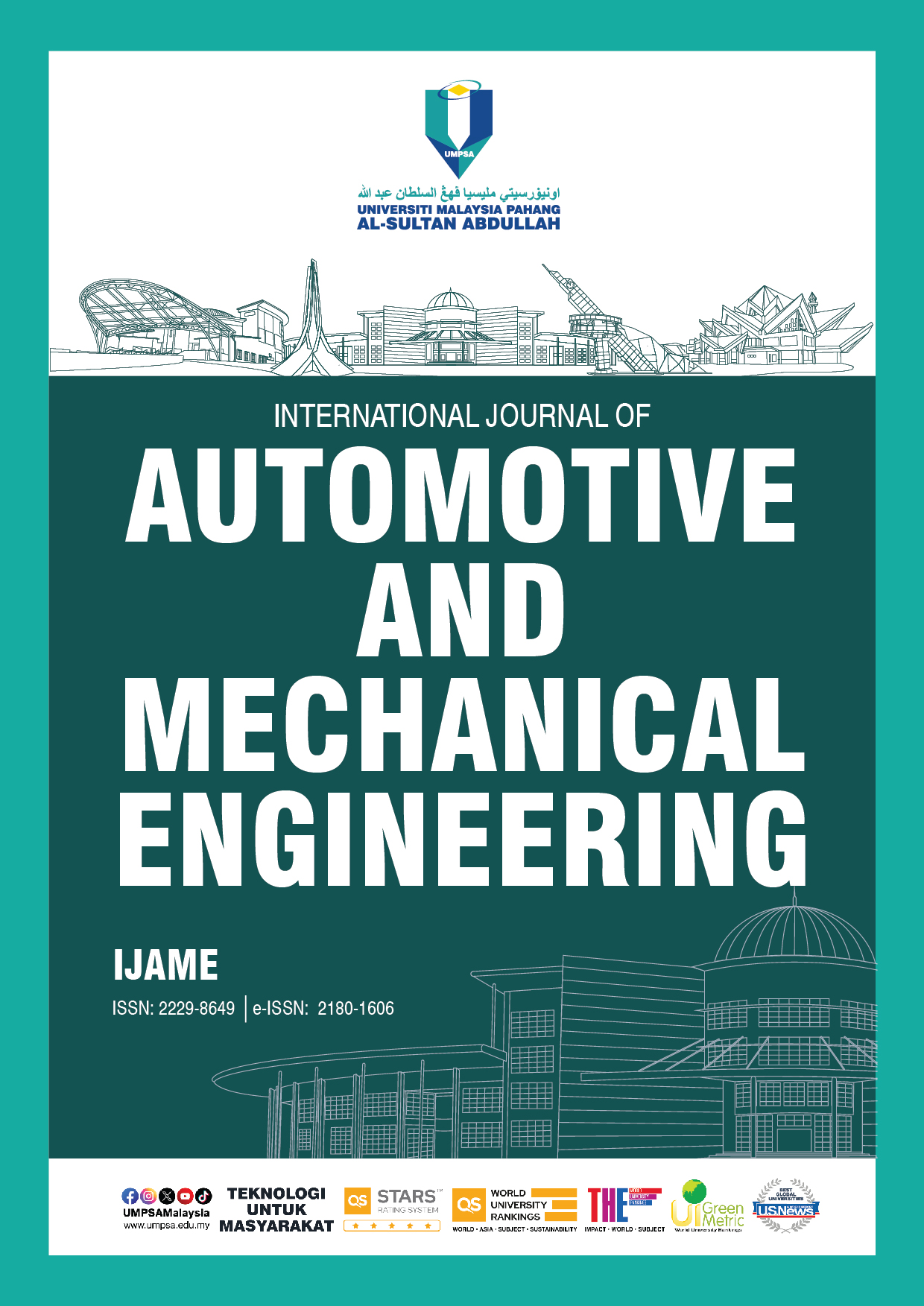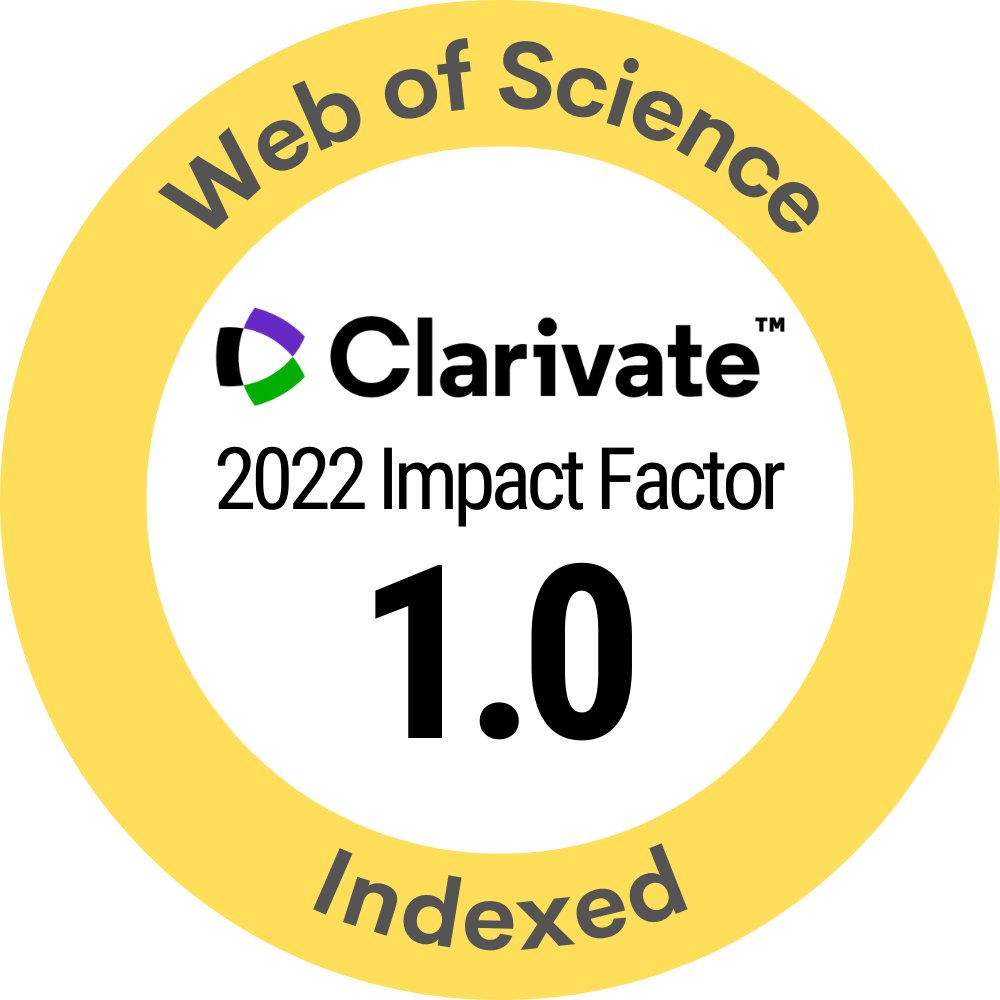Tool Wear Prediction Based on Adaptive Feature-Temporal Weighted Method and Long Short-term Memory Model
DOI:
https://doi.org/10.15282/ijame.22.1.2025.17.0934Keywords:
Tool wear prediction, Feature-weighted, Temporal-weighted, Multi-domain featureAbstract
Tool wear prediction constitutes a critical enabler for intelligent manufacturing systems, providing scientific decision support for proactive maintenance scheduling. Tool wear prediction is a critical challenge in manufacturing, as accurate predictions can optimize production processes, reduce downtime, and lower maintenance costs. However, existing methods face significant limitations: traditional machine learning approaches rely heavily on complex feature engineering, requiring extensive domain expertise, which limits their generalizability and scalability. Additionally, conventional Long Short-term Memory (LSTM) models, while effective for structured data on tool machining, struggle to adequately assign importance to features, leading to suboptimal prediction accuracy. These gaps highlight the need for a more robust and efficient approach to tool wear prediction. This study develops an adaptive LSTM framework with dual attention mechanisms to automate tool wear prediction in smart manufacturing. The method processes vibration signals through four stages—signal division, multi-domain feature extraction, adaptive feature-temporal weighting, and wear quantification. The proposed method is experimentally validated, and the results demonstrate superior performance with lower errors than conventional LSTM models, achieving a reduction of 12.27%, 34.31%, and 40.21% in RMSE on C1, C4, and C6, respectively, and 20.48%, 37.71%, and 39.12% in MAE. The developed model helps producers determine the precise timing of tool changes, reducing the risk of downtime due to tool failure and thus increasing productivity.
References
[1] Z. Liu, Z.-Q. Lang, Y. Gui, Y.-P. Zhu, H. Laalej, and D. Curtis, “Vibration signal-based tool condition monitoring using regularized sensor data modeling and model frequency analysis,” IEEE Transactions on Instrumentation and Measurement, vol. 73, pp. 1–13, 2024.
[2] B. Yang, M. Wang, Z. Liu, C. Che, T. Zan, X. Gao et al., “Tool wear process monitoring by damping behavior of cutting vibration for milling process,” Journal of Manufacturing Processes, vol. 102, pp. 1069–1084, 2023.
[3] L. Wu, K. Sha, Y. Tao, B. Ju, and Y. Chen, “A hybrid deep learning model as the digital twin of ultra-precision diamond cutting for in-process prediction of cutting-tool wear,” Applied Sciences, vol. 13, no. 11, p. 6675, 2023.
[4] M. Jamshidi, X. Rimpault, M. Balazinski, and J.-F. Chatelain, “Fractal analysis implementation for tool wear monitoring based on cutting force signals during CFRP/titanium stack machining,” The International Journal of Advanced Manufacturing Technology, vol. 106, no. 9–10, pp. 3859–3868, 2020.
[5] M. Ma, C. Sun, X. Chen, X. Zhang, and R. Yan, “A deep coupled network for health state assessment of cutting tools based on fusion of multisensory signals,” IEEE Transactions on Industrial Informatics, vol. 15, no. 12, pp. 6415–6424, 2019.
[6] Z. Li, X. Liu, A. Incecik, M. K. Gupta, G. M. Królczyk, and P. Gardoni, “A novel ensemble deep learning model for cutting tool wear monitoring using audio sensors,” Journal of Manufacturing Processes, vol. 79, pp. 233–249, 2022.
[7] D. T. Hoang, N. V. Thien, T. T. T. Pham, and T. D. Nguyen, “Combined analysis of acoustic emission and vibration signals in monitoring tool wear, surface quality and chip formation when turning Scm440 steel using MQL,” Eureka: PE, no. 1, pp. 86–101, 2023.
[8] J. Wang, S. Zhang, C. Li, L. Wu, and Y. Wang, “A data-driven method with mode decomposition mechanism for remaining useful life prediction of lithium-ion batteries,” IEEE Transactions on Power Electronics, vol. 37, no. 11, pp. 13684–13695, 2022.
[9] C. Chen, N. Lu, B. Jiang, and C. Wang, “A risk-averse remaining useful life estimation for predictive maintenance,” IEEE/CAA Journal of Automatica Sinica, vol. 8, no. 2, pp. 412–422, 2021.
[10] Z. Gao, Q. Hu, and X. Xu, “Condition monitoring and life prediction of the turning tool based on extreme learning machine and transfer learning,” Neural Computing and Applications, vol. 34, no. 5, pp. 3399–3410, 2022.
[11] H. Li and R. Deng, “Cutting tool wear detection method based on fusion of ELM and wavelet packet decomposition,” in International Conference on Advanced Algorithms and Neural Networks (AANN 2022), R. Tiwari, Ed., Zhuhai, China: SPIE, 2022, p. 61.
[12] M. Lin, S. Wanqing, D. Chen, and E. Zio, “Evolving connectionist system and hidden semi-markov model for learning-based tool wear monitoring and remaining useful life prediction,” IEEE Access, vol. 10, pp. 82469–82482, 2022.
[13] P. Twardowski, J. Czyżycki, A. Felusiak-Czyryca, M. Tabaszewski, and M. Wiciak-Pikuła, “Monitoring and forecasting of tool wear based on measurements of vibration accelerations during cast iron milling,” Journal of Manufacturing Processes, vol. 95, pp. 342–350, 2023.
[14] J. Duan, X. Zhang, and T. Shi, “A hybrid attention-based paralleled deep learning model for tool wear prediction,” Expert Systems with Applications, vol. 211, p. 118548, 2023.
[15] H. Guo, X. Lin, and K. Zhu, “Pyramid LSTM network for tool condition monitoring,” IEEE Transactions on Instrumentation and Measurement, vol. 71, pp. 1–11, 2022.
[16] F. C. Zegarra, J. Vargas-Machuca, and A. M. Coronado, “Comparison of CNN and CNN-LSTM architectures for tool wear estimation,” in 2021 IEEE Engineering International Research Conference (EIRCON), Lima, Peru: IEEE, 2021, pp. 1–4.
[17] J. Ou, H. Li, B. Liu, and D. Peng, “Deep transfer residual variational autoencoder with multi-sensors fusion for tool condition monitoring in impeller machining,” Measurement, vol. 204, p. 112028, 2022.
[18] N. Hu, Z. Liu, S. Jiang, Q. Li, S. Zhong, and B. Chen, “Remaining useful life prediction of milling tool based on pyramid CNN,” Shock and Vibration, vol. 2023, p. 1830694, 2023.
[19] G. Wang and F. Zhang, “A sequence-to-sequence model with attention and monotonicity loss for tool wear monitoring and prediction,” IEEE Transactions on Instrumentation and Measurement, vol. 70, pp. 1–11, 2021.
[20] B. Wang, Y. Lei, N. Li, and W. Wang, “Multiscale convolutional attention network for predicting remaining useful life of machinery,” IEEE Transactions on Industrial Electronics, vol. 68, no. 8, pp. 7496–7504, 2021.
[21] S. Woo, J. Park, J.-Y. Lee, and I. S. Kweon, “CBAM: Convolutional block attention module,” in Computer Vision – ECCV 2018, vol. 11211, V. Ferrari, M. Hebert, C. Sminchisescu, and Y. Weiss, Eds., Cham: Springer International Publishing, 2018, pp. 3–19.
[22] “2010 PHM Society Conference Data Challenge,” PHM Society. Accessed: Feb. 16, 2024. [Online]. Available: https://phmsociety.org/phm_competition/2010-phm-society-conference-data-challenge/
[23] “ISO 8688-2:1989,” ISO. Accessed: Feb. 16, 2024. [Online]. Available: https://www.iso.org/standard/16092.html
Downloads
Published
Issue
Section
License
Copyright (c) 2025 The Author(s)

This work is licensed under a Creative Commons Attribution-NonCommercial 4.0 International License.







